At Men’s Journal, we’re big proponents of veering off the beaten path (at break-neck speeds, in an ATV, if we can help it). So when planning a trip to a major trending tourist destination like Iceland, the obvious choice wasn’t to hunker down in the capital of Reykjavík. Or to tell you to go to the milky-blue waters of the Blue Lagoon. We set out to find a basecamp that felt remote yet homey, putting you at the center of extraterrestrial landscapes, heart-hammering exploits, and local haunts. So we ventured to southern Iceland.
Know this: Your guides and hosts will become friends. Close friends. In the first five minutes of meeting, our Midgard Adventure guide, Jón, an affable hulk of a man—who identifies as 50% Viking, 10% troll, and 40% something I can’t say out loud—turned to me and said, ‘Do you trust me?’ I nodded, then mimed him as he instructed me to hold out my arms, turn my thumbs down and rotate my palms out, then bend over and stick my arms through my legs. I trusted him less now, but acquiesced. He waddled closer, hunched his body over mine, then grabbed my hands and counted down from three before flipping my body in one fell swoop. It’s his trademark. So is grilling Icelandic-style hot dogs on a portable grill at the mouth of a Game of Thrones-worthy canyon. (Editor’s note: They’re beef hot dogs topped with white onions; ketchup; yellow mustard; and pylsusinnep, a sweet brown mustard. But dammit if it’s not the best hot dog you’ll ever scarf down.)
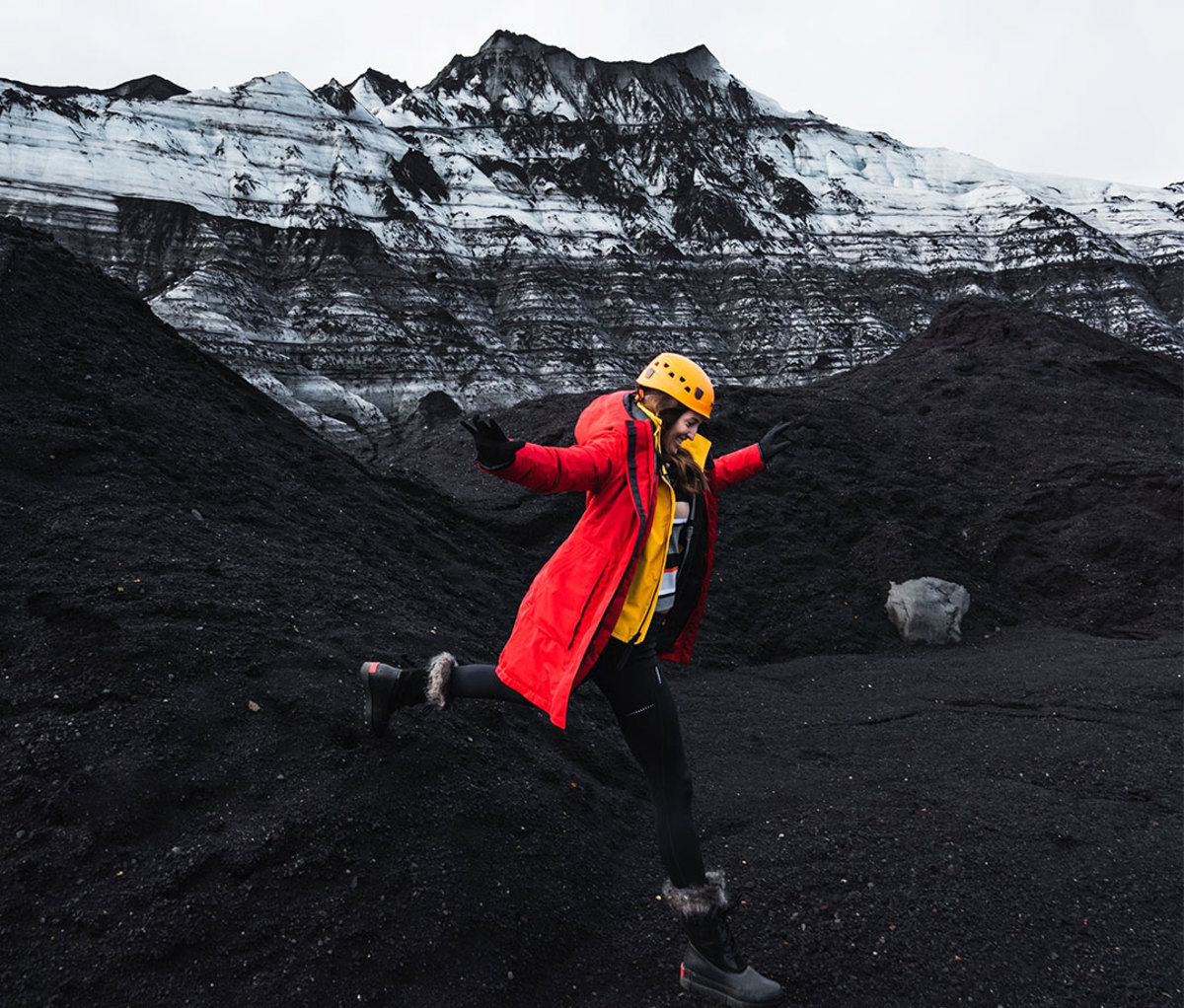
All of this is to say we found exactly what we were looking for—a wild, whirlwind of an adventure, where the locals make just as much of an impact as the destination. Use this four-day weekend guide to maximize your time in this Nordic nation’s moss-covered lava fields, dramatic waterfalls, black sand beaches, and otherworldly ice caves.
How to Get to Southern Iceland
Fly in to Reykjavík via Icelandair. If you can swing it, fly Saga Class (business class). It’s the best airline meal I’ve enjoyed, plus the Saga Lounge is strikingly Icelandic in design. On the plane, you’ve got an array of cocktails and spirits, plus two three-course-meal options to choose from. The in-flight entertainment is über-Icelandic, with music from native artists, locally made films, and even the option to learn some words and phrases before the wheels touch down in the “Land of Fire and Ice.” It’s also worth noting Icelandair’s Stopover program. It connects 23 European gateways (21 in North America), all through Reykjavík’s Keflavík International Airport, so if you’re traveling overseas, you can make a pitstop in Iceland for up to seven days at no additional cost.
Your destination is Hella. To get there, rent a car at Keflavík International Airport. There are loads of rental companies, just be sure to book early to get the best deal. It’s about a one-hour drive to your accommodations.
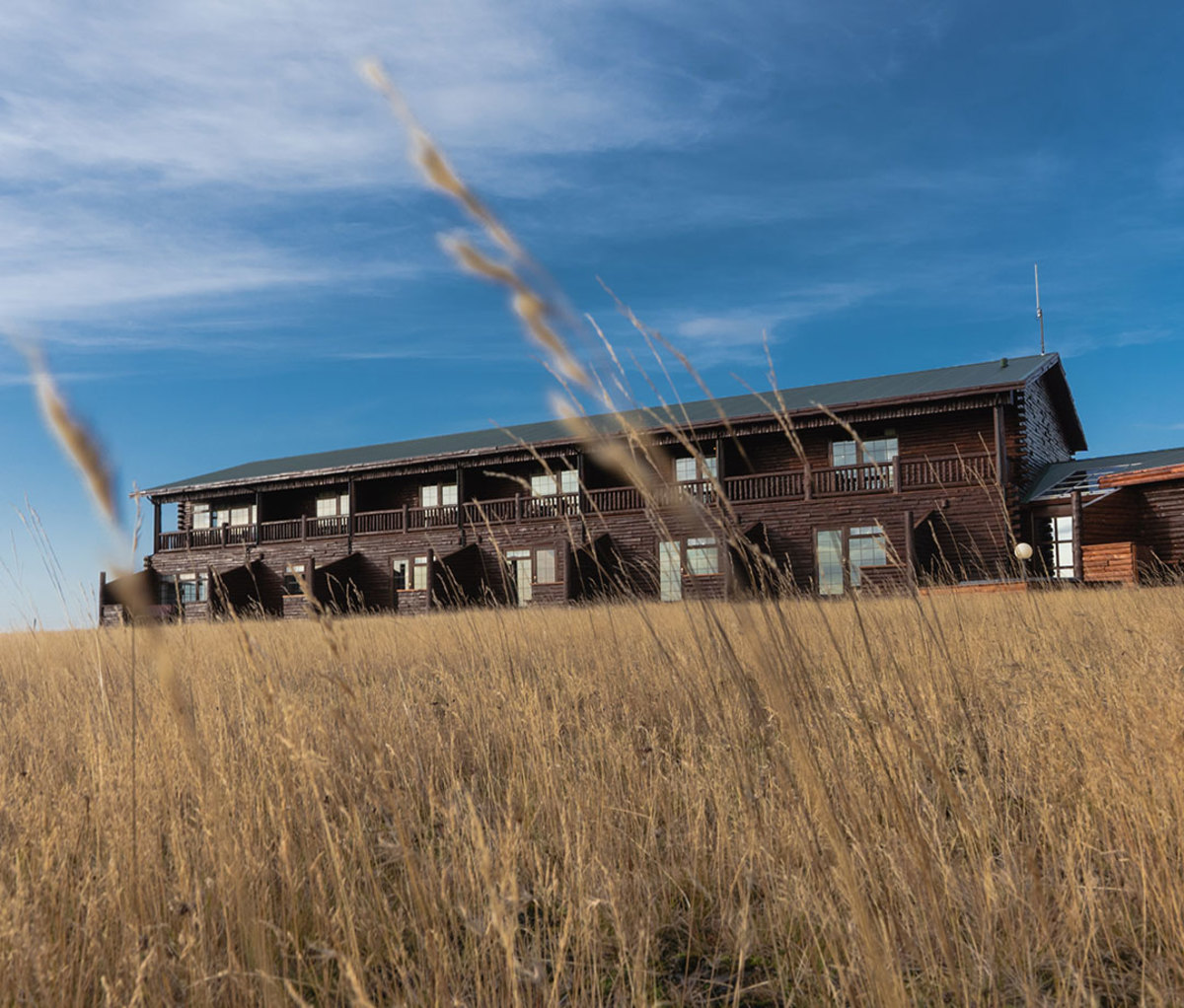
Where to Stay in Southern Iceland
Hotel Rangá: This lodge-esque boutique hotel is the only 4-star property in Southern Iceland. It’s nestled along East-Rangá River (excellent salmon fishing), and there are three communal geothermal-heated hot tubs studded along the back of the property, where you can soak with a cocktail in-hand. Opt from 52 standard and deluxe rooms, as well as suites, which are themed after the seven continents. The new Icelandic master suite perfectly encapsulates Nordic style. The showstoppers are a handmade stone tub in the middle of the room, and a rotating platform in the living room that provides 360-degree views of the surrounding countryside (best enjoyed with a cup of coffee or dram of whiskey). The overall feel is unfussy and cozy, with pine-log walls and terracotta tiles running through the hotel. Read a book in one of the cushioned nooks or play a round of pool; the billiards table is festooned with an antler chandelier overhead. The Icelandic sense of humor is evidenced in the quirky, kitschy details sprinkled around the hotel, like the towering taxidermy polar bear in the hotel’s lobby and the cheeky (literally) bar stools at the bar (they’re women’s legs). The reason to come here over anywhere else is actually three-fold.
For one, the property has its own observatory with a roll-off roof and two mammoth computerized telescopes. A local astronomer will point out celestial objects of interests on clear nights. If you’re lucky (aka there’s high solar activity, few clouds), you can also view the northern lights. There’s a button on the telephone in your room to request to be woken up should the aurora borealis strike when you’re sleeping. Because Hotel Rangá’s in a remote, rural area, there’s little light pollution obscuring the dancing flares. What’s more, the owner, Friðrik Pálsson, really gives a damn about your experience. He makes a point to briefly sit and chat with every guest in Rangá Restaurant. He was in the fishing industry before becoming a hotelier, and that really shows in the food. The seafood is sublime. You can order classic Nordic fare, like smoked puffin, reindeer carpaccio, and skyr cake—but don’t leave without trying the wild mushroom soup, salmon with sweet potato purée and apples, or beef tenderloin with sunchoke purée and buttermilk crumble. Because the menu is so extensive, there’s really no need to venture elsewhere for meals either. (Pro tip: Come around the holidays and feast on the Christmas Buffet.)
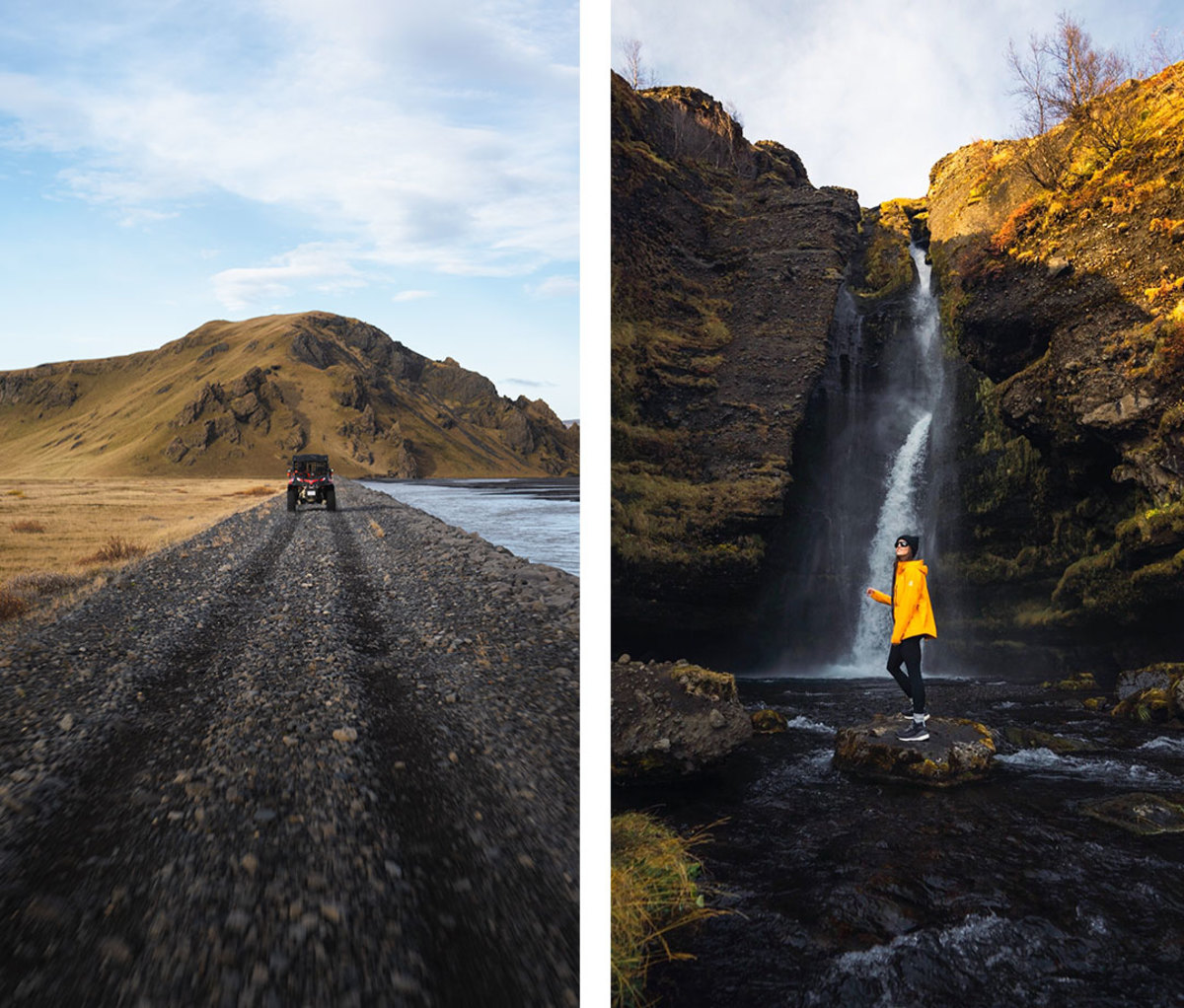
What to Do in Southern Iceland
DAY 1
Ride ATVs With Southcoast Adventure: Depending on your flight, and if you need a power nap, you might have just a few hours or a full day. If it’s the former, head to Gljúfrabúi, road 249, for Southcoast Adventure’s 2-Hour Buggy Tour. Make sure you book in advance, and note you can also pay for pick up/drop off. Opt between shared (two people) or a single ride in a 4×4 ATV, then gear up with the provided baclava, helmet, and insulated coverall. You’ll whip around the tundra field between Fljótshlíð (rural municipality) and Eyjafjallajökull (ice cap), stopping to explore Gluggafoss (waterfall—”foss“ means waterfall in Icelandic), Markaðsfljótaurar (black sand beach), and the Hamragarðaheiði viewpoint overlooking Seljalandsfoss and Vestmannaeyjar (archipelago off the South Coast). Most of the tour is over gravel and sand, but you’ll also churn through small streams. Available at 10 a.m. or 3 p.m.
Go Trail Running Up Stóra-Dímon: When you’re riding around the tundra fields on the buggy tour, you’ll see Stóra-Dímon—less of a mountain, more of a steep hill. It’s easily accessible for a quick hike or run, if you fancy trail running, and takes roughly 15-20 minutes to scale (longer if you’re walking).
Visit Skeiðvellir (Icelandic HorseWorld): This family-run horse-breeding farm has up to 100 Icelandic horses. You’ll see ’em all over Iceland, but it’s worth getting to know the small-but-sturdy purebreds up close (just don’t call them ponies). Book a stable visit to learn about their unique history (no horses or riding equipment are permitted entry in Iceland to protect Icelandic horses from disease; horses that have been exported are consequently not allowed to return) and traits (Icelandic horses are capable of executing five different gaits, including the tölt). Experienced riders with a full day to spend can opt for the 4.5-hour Under the Volcano experience (May to September, 9:30 a.m.), riding Icelandic horses over lava fields and low rivers, all while taking in views of Hekla (volcano) and Eyjafjallajökull (ice cap). Only have moderate experience and a few hours? Go for the 2-hour Country Ride (May to October, 9:30 a.m. or 2:30 p.m.), where your horse will demonstrate the tölt. And if you’ve never been on a horse before, the 1-hour Mountains & Meadows tour is perfectly suited to beginners. Ride on soft, wide tracks with views of surrounding glaciers and volcanoes (year-round, 10 a.m. or 2 p.m.).
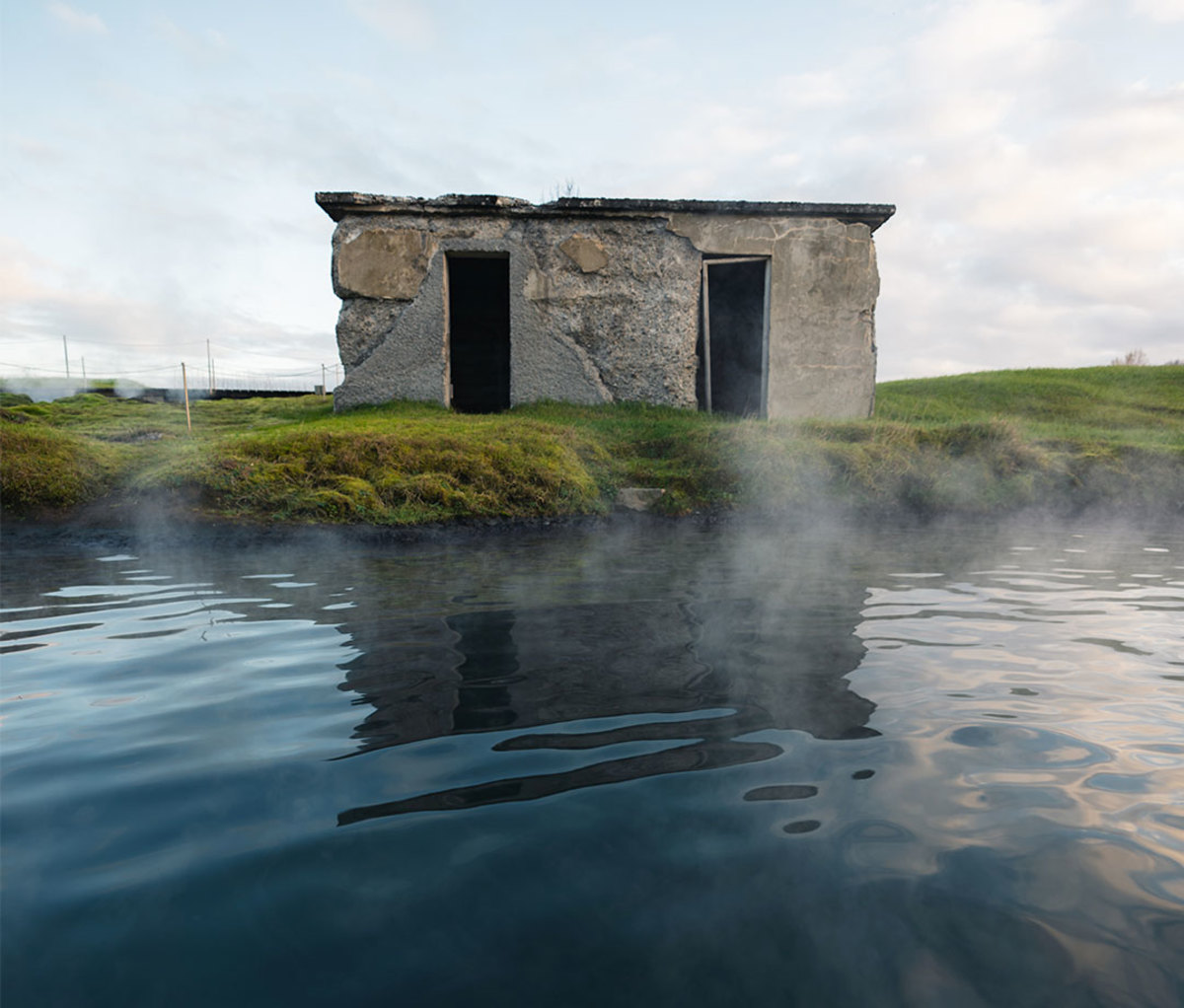
DAY 2
Golden Circle Tour Highlights
The three hot spots comprising the Golden Circle are Gulfoss (waterfall), Geysir (geyser/geothermal park), and Þingvellir (national park). To squeeze everything in one day, we recommend hitting the first two. You can book a guided tour package or do the drive yourself, which allows you to splurge on guided ventures on your other days (our recommendation). Here are the spots you don’t want to miss.
Háifoss: This is the fourth tallest waterfall in Iceland. The river Fossá charges over the cliffside, dropping 122 meters into a gorge. You’ll see the smaller, neighboring waterfall, Granni, to its right. For a quick visit, follow road 332 and park in the lot (south of the waterfall), then walk the short distance to a lookout point. You can also hike to the waterfall, following Fossá (approx. 5 to 6 hours). Just note you’ll need a car with four-wheel drive either way. Stop at The Highland Center Hrauneyjar when you’re driving from Hella to Háifoss if you need a snack, meal, or rest stop.
Gulfoss: You’re gonna have to fight the crowds more at this iconic waterfall. Rather than dropping from a spectacular height, these falls cascade in two parts with a tremendous amount of power. Meltwater from Langjökull glacier feeds Hvítá, a glacial river, keeping Gulfoss roaring year-round. Walk along the footpath that winds along the falls. In the warmer months, the water spray tosses rainbows; and in the winter, parts of Gulfoss freeze over.
Geysir Geothermal Park: Boiling mud pits might not seem like a riotously good time, but this geothermal park is geologically and historically significant. Strokkur is an active geyser that blows every ~6 minutes. Come earlier in the morning or in the evening, so you’re not among throngs of tourists. If you have the time, inquire about an opportunity to assist a guide in boiling eggs in one of the hot springs, or dig up rúgbrauð, Icelandic rye bread that bakes for 24 hours underground, just below the earth’s surface. It’s sweet and dense (no yeast, but a good amount of syrup and buttermilk), more like the consistency of cake, and pairs really well with smoked fish or butter.
The Secret Lagoon in Flúðir: The Blue Lagoon is manmade (it originated as the runoff water from a geothermal plant)—with algae, silica, and lava rock from the surrounding lava field lending the water skin-soothing properties. But it’s also mobbed with tourists. Instead, go where the locals go. The Secret Lagoon is a natural geothermal pool with lava rock below. Icelanders shower naked, communally, to cleanse their bodies and rinse out their swimsuits before and after bathing in the hot springs, so don’t be afraid to follow suit—in fact, it’s only weird if you don’t. We suggest booking in advance, and coming around sunset (depending on the time of year), when the golden-hour light and steam give an ethereal vibe.
Where to Eat
Friðheimar, a family-run tomato farm and restaurant, is a top-notch spot for lunch. Tables are set in the expansive greenhouse, where artificial lighting and bees keep tomato production thriving (about a ton a day), despite Iceland’s harsh conditions. Order the tomato soup (obviously). You can add kebabs (chicken, seafood, or cheese), and gorge on as much freshly baked bread as you’d like, topping off the meal with cheesecake jars layered with a jam made of green tomatoes, cinnamon, and lime.

DAY 3
Superjeep and Ice Cave Tour With Southcoast Adventure
Southcoast Adventure’s Super Jeep and Ice Cave Tours ensure maximum stokage—not just because they offer nearly a dozen different itineraries, but because their tour guides are also flexible and accommodating. They’re open to tweaking excursions on the fly depending on the weather and your preferences. Magnús Arturo, our intrepid driver and guide, was eager to show us some of his favorite spots, so we started with a winding drive past the seafront village of Vík—climbing a treacherous road made navigable by the monstrous Super Jeep—toward a scenic overlook.
Walk the Reynisfjall Lookout Over Reynisdrangar and Reynisfjara: There are a whole lotta names that sound exactly the same, but quick breakdown: Reynisfjall is a mountain that was formed during the penultimate Ice Age. It formed from a volcano that erupted under a glacier, creating geologically striking formations like pillow lava and basalt pillars and columns. The top of Reynisfjall creates a stunning (flat) cliff walk that towers over Reynisdrangar, basalt sea stacks that dramatically rise from the water, as well as Reynisfjara, an iconic black sand beach. During the right season, you can see puffins’ nesting colonies along the cliffside.
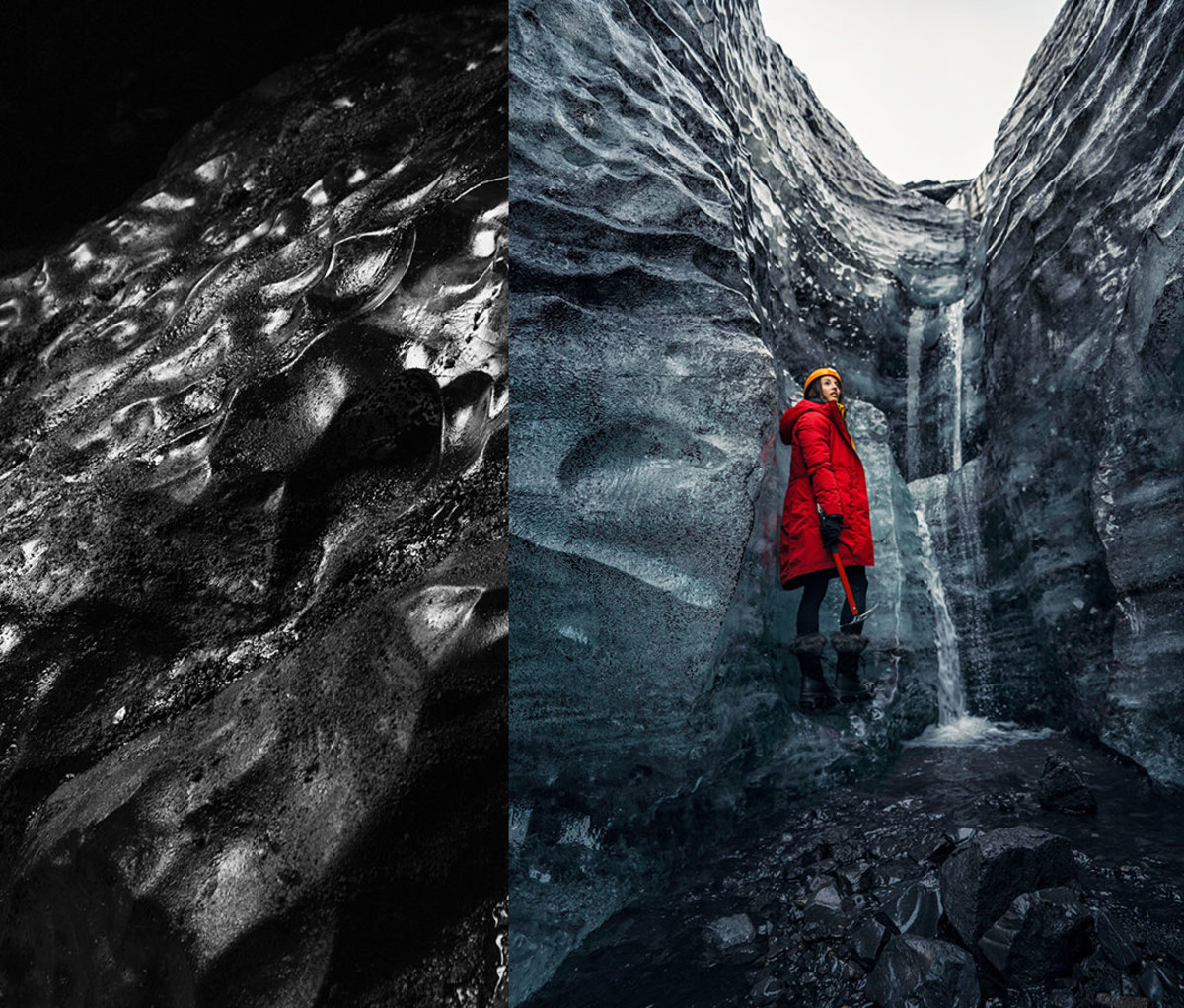
Tour Katla Ice Cave: Your guide will drive the Super Jeep ~45 minutes north of Vík to Mýrdalssandur—and boy is it an epic drive. The volcanic sand plains were formed by Katla volcano’s 20+ eruptions over the years, though subsequent glacial flooding has turned it into an outwash plain; intensely black glacial sediments have been deposited by powerful meltwater floods. Hafursey, another mountain created during the Ice Age, juts dramatically from the volcanic sand, blanketed in bright green scrub vegetation. Continue driving up and over sand banks until you reach Katla ice cave in the Kötlujökull glacier, an icefall of Mýrdalsjökull glacier. You’ll cross planks of wood to navigate meltwater streams, stopping to marvel at the striated layers of ice. The glacier is like a layer cake, with bands of black separating white ice; the black layers are ash from Katla’s eruption strapped in the ice. Strap crampons to your boots, and walk through the ever-changing ice cave. Because meltwater is indefinitely working its way through the ice, new formations happen week by week. Fun fact: The Katla ice caves were a filming location for Star Wars Rogue One.
Where to Eat
Stop by Smiðjan Brugghús, a brewpub in Vík, for lunch or an early dinner. You can gorge on a fried chicken sandwich, blue cheese burger, or BBQ ribs, then wash it down with one (or two) of their 10 Icelandic craft beers on draft.
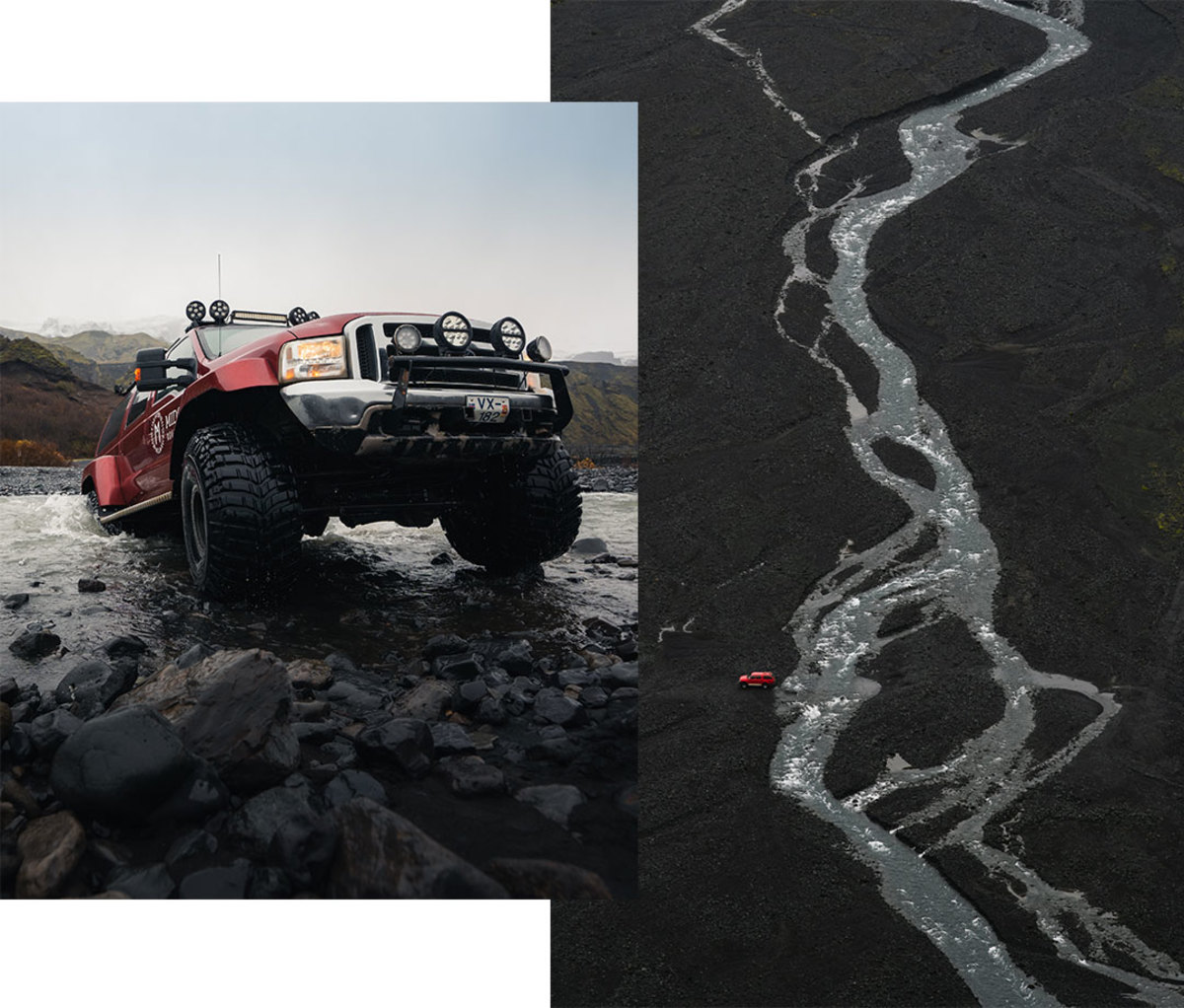
DAY 4
Þórsmörk Super Jeep Tour With Midgard Adventure
This is another day reserved for a guided tour, and we can’t recommend Jón Hostage of Midgard Adventure enough. Aside from expertly navigating dangerous rivers in a Super Jeep, he also has an extensive knowledge of Icelandic folklore.
Walk the Shores of Landeyjarfjara Beach: The tour starts at this small black sand beach, with ship wreck remains strewn about the beach. Unlike the beaches at Vík, this’ll be deserted—and you’ll have views of the Westman Islands and volcanoes.

Hike to the Top of Valhnjukur Mountain: To enter Þórsmörk Nature Reserve, you’ll have to cross Krossá—a notoriously dangerous river. (Do not attempt to cross this alone in a regular car. Guides know the best points to cross the river, and exactly what air pressure their Super Jeep tires need to roll over rocky terrain.) The hiking path to Valhnjukur begins just past Volcano Huts in Þórsmörk. It’s a short hike (1.5 miles) but the views are extraordinary. Peer down at glaciers, volcanoes, and braided glacial rivers (you’ll spot Krossá and Markarfljót).

Traverse Stakkholtsgjá Canyon: Coined the Game of Thrones canyon, this leisurely out-and-back hike is an absolute must on your journey through Þórsmörk, just note you need to be part of a tour provider (like Midgard Adventure). Walk carefully over the wet rocks and pebbles lining the canyon, as a small creek runs through its length. At some points, it can be quite high, make sure you’re wearing proper waterproof hiking boots. The cliffs loom on either side of the canyon, revealing curious caves and ravines. At the end, it narrows, forming a slot canyon waterfall. Carefully scramble over the boulders, then stand before the falls. Spray rains down on you—and, if you can get in here without a large group of tourists, it’s a magical experience that feels clandestine (and might have you believing in trolls and elves after all).
Soak Up Some Epic Waterfalls: To round out the trip, head to Gljúfrafoss (also called Gljúfrabúi), a short ways off Route 1 Ring Road. Gljúfrafoss is a “keyhole” waterfall, in that it’s almost hidden behind a cliff. You need to walk through a sizable crack in the rock, then enter the main chamber, which is carpeted in soft green moss. After, walk a few hundred feet to Seljalandsfoss, the more famed of the two falls. The river Seljalandsá feeds this waterfall, which majestically drops 200 feet from a cliff. What’s unique to Seljalandsfoss is its walking pathway. Scramble—again, carefully—down the wooden steps and onto the rocks leading to the bottom of the falls. You’re going to get at least a little wet from the spray, but if you want to commit to a full send, you can bop under the falls (how often can you say you were doused by an Icelandic waterfall?).
from Men's Journal https://ift.tt/2r3muY9
No comments:
Post a Comment